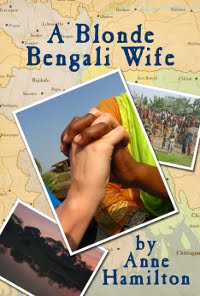“What exactly is a mangrove?” I ask Munnu. “And are they always littoral?”
“Trees,” he answers comprehensively. “I do not know what littoral means.”
The inner forest is largely impenetrable by all but the tiniest vessels and the waterways are saltwater swamp, clogged with leaves and fallen trees. The Sunderbans are a UNESCO World Heritage site and a haven for birds and wildlife: humming birds to birds of prey, wild deer, monkeys, and every hour on the hour one of the boys pop up to say that he has definitely seen a
Hiron Point, the most southerly point of the Sunderbans, is at least eight hours away by boat and so far beyond our capabilities. As it is, we barely penetrate the edges of the forest, yet even here the sheer variety of trees is immense. They come almost to the edge of the water (hence the term “littoral”), are stopped only by a slip of muddy beach, smooth and slippery and home to crocodiles during the rainy season.
At this point, a real writer writing a real journal would be able to list the trees, a brief but interesting description of their origins, lifespan and uses, possibly with footnotes and references to learned works. I groan out loud.
“Anne. What is the problem?” Munnu wakes up to ask me.
“I cannot name the trees. I don’t recognise any of them.”
“I help,” he turns his chair to the side, puts his bare feet up on the rusting red rail and makes a scientific observation. “Tall thin trees,” he suggests, “with big green leaves. Others with small leaves. Short, fat trees like a bush…Anne. Why do you not write this down?”
“Because you don’t know the names either,” I object.
“Yes. There—” he waves at a palm tree. “That is palm tree. And here, maybe this is...err...willow tree?”
(ABBW Ch28)
Sailing through the waters of the Sunderbans, on a vessel that looked like a pink four poster bed,with Munnu and the 'boat crew' was one of the highlights of the trip to Bangladesh: tranquil, beautiful and balmy (and, at times, barmy). There was probably already an element of nostalgia too; it also meant that I couldn't put off the return home for too much longer...

No comments:
Post a Comment